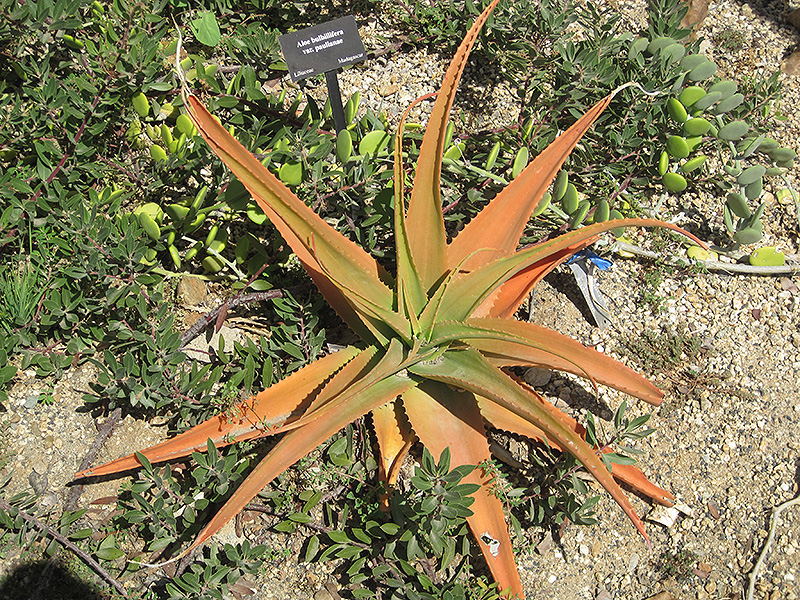Paulian Aloe
Description
A solitary, stemless rosette of green, lance shaped leaves that are often tinged red, with evenly spaced yellowish-white teeth; produces racemes of yellow tipped, orange flowers with bulbils on the main stem; a wonderful garden or container accent
Landscape Attributes
Paulian Aloe is an herbaceous evergreen perennial with an upright spreading habit of growth. Its wonderfully bold, coarse texture can be very effective in a balanced garden composition.
Paulian Aloe is recommended for the following landscape applications;
Planting & Growing
Paulian Aloe will grow to be about 14 inches tall at maturity extending to 24 inches tall with the flowers, with a spread of 24 inches. It grows at a slow rate, and under ideal conditions can be expected to live for 40 years or more. As an evegreen perennial, this plant will typically keep its form and foliage year-round.
This plant does best in full sun to partial shade. It prefers dry to average moisture levels with very well-drained soil, and will often die in standing water. It is considered to be drought-tolerant, and thus makes an ideal choice for a low-water garden or xeriscape application. It is not particular as to soil pH, but grows best in sandy soils. It is somewhat tolerant of urban pollution. This species is not originally from North America. It can be propagated by division.
Paulian Aloe is a fine choice for the garden, but it is also a good selection for planting in outdoor pots and containers. With its upright habit of growth, it is best suited for use as a 'thriller' in the 'spiller-thriller-filler' container combination; plant it near the center of the pot, surrounded by smaller plants and those that spill over the edges. Note that when growing plants in outdoor containers and baskets, they may require more frequent waterings than they would in the yard or garden. Be aware that in our climate, this plant may be too tender to survive the winter if left outdoors in a container. Contact our experts for more information on how to protect it over the winter months.

